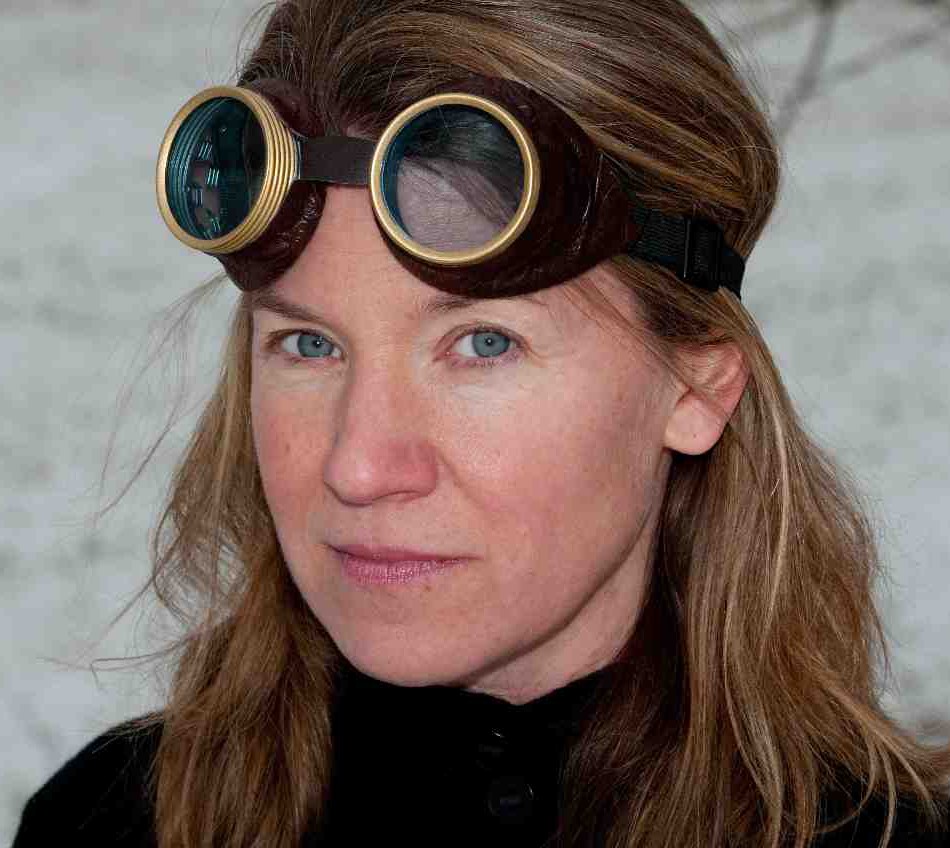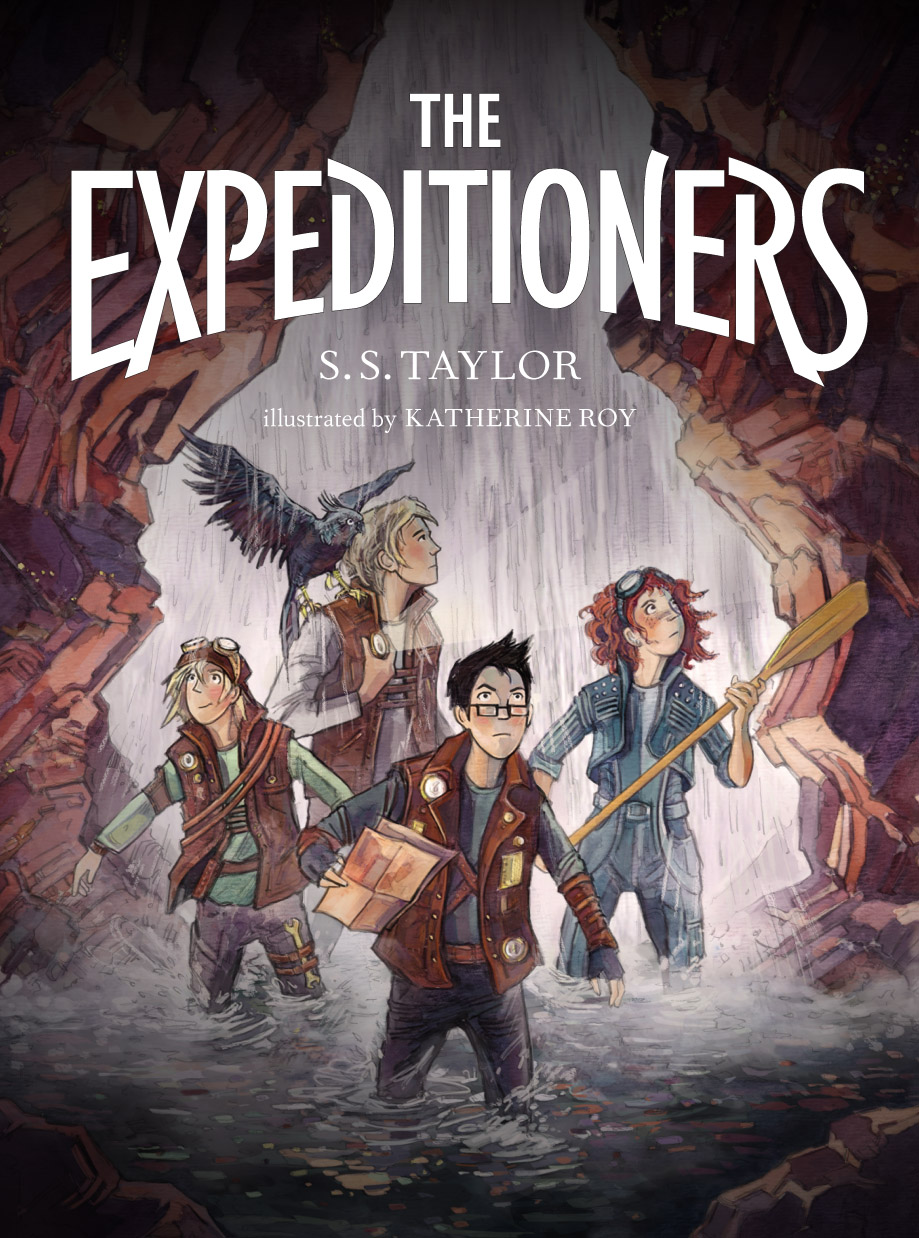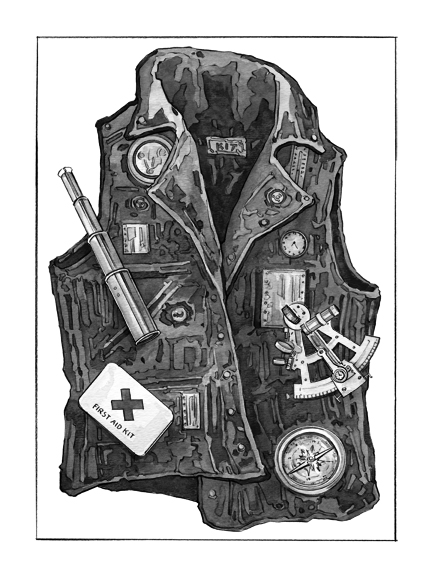 S.S. Taylor is the author of “The Expeditioners and the Treasure of Drowned’ Man’s Canyon.” The following is a complete transcript of the author’s interview with Cracking the Cover
S.S. Taylor is the author of “The Expeditioners and the Treasure of Drowned’ Man’s Canyon.” The following is a complete transcript of the author’s interview with Cracking the Cover
Have you always wanted to be a writer?
Pretty much. When I was eight, I decided to write a novel called Borrowing Things. It was about very small people who lived in a house and borrowed things . . . Yes, I was plagiarist. But all kidding aside, I think a lot of writers start out stealing from their favorite writers, “retelling” familiar stories if you will. It allows you to figure out how stories work, how they’re constructed and how the characters are created.
Why write for young readers?
Because the books that I read between 7-15 are the books that fired my imagination, that made me a passionate reader and that made me want to be a writer. I can think of nothing more fun or more rewarding than being part of that process for young readers. My own kids and their friends are in their children’s literature years and I just love thinking of them when I write, writing for their imaginations and concerns.
Where did the idea for The Expeditioners come from?
I wrote the script for a graphic novel about Amelia Earhart and as part of my research, I spend a lot of time reading about her childhood and the childhood of her husband, George Palmer Putnam, who as a teen was known as “Boy Explorer, George Putnam.” That’s where the characters came from, but then I ran into a problem. How could a 20th or 21st century kid really be an explorer without a lot of new places to explore? Then I started thinking about the circumstances under which there suddenly WERE a lot of new places to explore . . .
How many books will there be?
You never want to assume too much about the public’s interest in your work, but I have five or six in mind. I’ve got a big story about this world that I want to tell, as well as the four main characters’ own narratives, and a lot of new places to explore. I really hope I get the chance to do that.
The Expeditioners has a steampunk feel to it. Are you a fan of the genre?
I am, although I came to it in a roundabout way. I didn’t know much about Steampunk when I started imagining a world in which computers had failed and people had returned to archaic technologies. I was coming up with this idea that computers had been invented in the 1800’s and I was talking about it with a friend and she said, “Oh, that sounds really Steampunky.” I realized that all these books I loved, Jules Verne and H.G. Wells, were actually part of this whole amazing world. I went on a Steampunk bender and read The Difference Engine and all that stuff and then fell completely in love with Scott Westerfeld’s Leviathan series and Kenneth Oppel’s Airborn series. I just recently discovered Richard Harland’s Worldshaker. Steampunk is having a bit of a moment and I think it’s because we are all sort of examining our relationships to technology right now. We’re wondering what our lives would look like without computers, without jet planes. And we see something in that vision that’s very attractive. Though, of course, there’s another side to the romance of steam technology . . .
 How did you come up with the gadgets found in Kit, M.K. and Zander’s vests?
How did you come up with the gadgets found in Kit, M.K. and Zander’s vests?
I was a huge James Bond fan as a teenager. Huge. The quote next to my senior picture in my high school yearbook was from Casino Royale. And I loved Swiss Army Knives and cool survival gear. The vests were something I would have loved as a kid and I started to see the gadgets as physical manifestations of Alexander West’s love and care for his children. I had so much fun coming up with those gadgets and then seeing The Expeditioners’ amazing illustrator Katherine Roy’s versions of them. I just love what she did with them. They turned out even better than in my imagination.
How did you develop the siblings’ different personalities?
I knew that I wanted my narrator to be a kid who felt a little out of place, who was a little resentful of his older brother, who is handsome and looks just like their father and for whom things just come easily. So that’s Kit. He’s the middle child, he loves maps and books and is – at this point – small for his age. He’s smart and a little sardonic and a romantic at heart. Zander is good-looking and brave and wants to be in charge, but he has struggles too, of course, and we’ll get to know more about them as the series goes on. M.K. is one of those characters whom I sort of unexpectedly fell in love with as I was writing. She’s a talented engineer and she isn’t afraid of anything. She has a tendency toward physical violence actually. But all of these character traits will shift and change as the kids get older, just as they do in real families, if the adults are smart enough to let them.
There’s a lot of maps and map-centric elements throughout the book. Did you have to do a lot of research?
Yes, although the lovely thing about fiction is that you can make it up! But I did have to do a lot of research on navigation and surveying and cartography and how maps are made.
Did you create your own maps for the “new discoveries”?
I did create them, in my head mostly, and did some drawings to kind of work them out. But then, when Katherine Roy came on board, we took it to a whole new level. Katherine drew all the maps and in fact discovered that I had made a mistake in one of my descriptions, so we were able to fix it and make it even better. Thank you, Katherine!
If you could go exploring anywhere, where would you go?
There are a lot of places I am dying to travel, Asia and Africa at the top of the list probably. I’m fascinated by Eastern Europe. And I definitely have an obsession with Polar exploration. Maybe undiscovered reaches of the North Pole . . .
What is it about your book that you think will appeal to young readers?
First and foremost, I hope they’ll be drawn in by the adventure and the mystery of it, the idea of four kids in a desperate race to uncover a huge treasure before evil government agents can get their hands on it. Beyond that, I hope they’ll become interested in geography and the history of exploration and start to ask questions about who has gotten to write that history of exploration and what voices haven’t been heard.
 Looking back, how has your writing evolved so far?
Looking back, how has your writing evolved so far?
I think I’ve learned to trust the process more. There’s always a point where the whole book seems like a terrible idea, where you lose all will to finish it. But I’ve really learned to trust my characters and trust the story, to just keep going and know I’ll find my way.
What are you working on now?
I’m working on the second book in The Expeditioners series. I’m having so much fun developing these characters and telling the continuing stories of their relationships with each other and with the government and the authorities at their new school, The Academy for the Exploratory Sciences. I don’t want to give too much away, but I will say that the West kids’ journey to discover the meaning behind the second of their father’s mysterious maps takes them to an undiscovered part of the Caribbean and into extreme peril.
Is there a book from your own childhood that still resonates with you today?
I really loved Roald Dahl. Danny the Champion of the World is a book that has just stuck with me, especially now that I’m a parent. That relationship between Danny and his father is something to aspire to and I love that it’s a book about the moment when you figure out there’s this whole adult world out there and that adults don’t always behave in reasonable ways.
